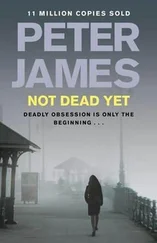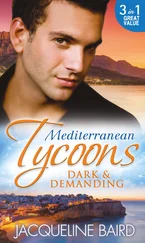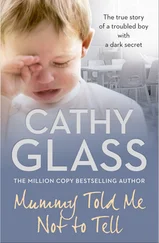
Once Kaye saw an image from the abandoned sanatorium he had explored last summer, of a rusted surgical table, pale stuffing bubbling out of rips and tears in the cushions, the broad foot speckled with corrosion and half covered in sand and leaves.
“What’s this?” Kaye said and leaned closer to the screen.
It was too late to close the laptop, and if he did, the professor would probably just become more curious. He had to go with the questions.
“It’s from the old sanatorium up north,” he said. “Have you been there?”
Kaye shook his head. “No, but I’ve heard about it. Hasn’t it been closed for decades?”
He nodded. “By the look of it.”
“Did you take this?” Kaye said.
He nodded again.
“How did you get in?”
“Through the front door,” he said. “It’s fairly open.”
“Fairly?” Kaye said, looked at him and laughed.
He smirked, but inside he was squirming at being asked about a place which felt so private.
“Does everything there look as ruined as this?”
“More or less.”
“Did you go alone?”
“I did that time,” he said. He didn’t want Kaye to think he was a loner.
“Wasn’t that risky?” Kaye said. “In such an old building far away from everywhere else?”
“Just a little,” he said. He had broken four fingers on his right hand there, which required multiple plates and pins in the fractured digits, and several weeks in a cast, but the visit had nevertheless given him the impetus to seek employment as a photographer.
Kaye laughed, then took in the image again. “It looks brutal. And sad. Was it?”
“I guess it was,” he said. “But beautiful too.” It felt oddly good to have admitted that.
Kaye smiled. “Otherwise why go there to take pictures?”
“It reminded me of a place on the southern continent,” he said and mentioned the name of the city where the casualties had been the greatest. He assumed the assistant professor would recognize it from the news.
Kaye grew serious but there was no sign of pity in his eyes, only warm interest. “Tell me more about it,” the assistant professor said.
To his surprise he did.
HE DIDN’T KNOW HOW MANY PHOTOGRAPHS KAYE needed for his articles, but he had made several series of each owl, had become almost as familiar with their motion and energy as he was with the assistant professor’s. He was waiting for Kaye by the stairs to the sixth floor. Someone had placed a worn bright-red office chair next to the door. He was clearly not the only person used to waiting there. The intensely colored furniture was a hard affair with armrests that wriggled when he sat down on it and upholstered in a particularly coarse and itchy wool.
Kaye appeared around the corner from the hallway that led to the elevators, shot him a lopsided smile, then climbed the grated stairs to the locked door. He grinned back at Kaye, rose from the sofa, and picked up the camera bag. They had spent the previous night in the bedroom on the second floor of the assistant professor’s antique-looking house, without having worked in the owl room first. That had been unexpected, but felt too good to be alarming, at least for now. Kaye tapped in the key code and held the door open for him. As he passed the assistant professor and entered the stairwell, a warm hand traced his jawbone. He half turned and smiled before continuing up the steps.
The scents and sounds of the cloakroom, the mouse room, the owl room, and the auditory chamber, were now so familiar that they seemed ordinary, even comforting. As always when he was there, he wondered how he’d feel when the job was finished, and how much he would miss it. Kaye entered the recording room to turn on the computers and the sound equipment.
He set up his tripod and camera in the usual corner of the fake landscape and squatted with the camera remote in hand to wait for the assistant professor. Kaye exited the soundproofed room and returned with one of the largest owls sitting on his glove, a dark brown bird with bronze-colored eyes and long tufts of feathers that looked like ears on each side of its head, and lifted it to the tree to start the experiment.
Afterward, Kaye switched on the light in the recording room to signal that the experiment was over and that he could put the camera away. As he clicked the steel legs of the tripod together, there was a sudden beating of wings, a quick motion in the air, and a low shout behind him. For a brief moment he didn’t understand what he was seeing. The owl had flown from the tree and grabbed hold of Kaye’s head with its talons. Now the bird was flapping and fluttering with both wings extended, a reach that was easily as long as the height of a human being. Feathers, pieces of wood wool, and drops of blood spattered the walls and floor. Kaye was pulling at the owl’s legs and body, but it didn’t help.
There must have been a lot of sound, but it had momentarily faded. Instead, everything he saw stood out with bright clarity and time slowed down. He crossed the small space to the owl, took hold of the dark, scale-covered legs with one hand and Kaye’s head with the other to separate them. But the owl didn’t budge, its claws deep in his lover’s flesh. In the chaos of blood and hair and feathers he couldn’t see if the owl was clasping Kaye’s eyes, which was what he feared the most. He pulled at the owl’s legs once more, but its shape was so different from anything else he had trained on, he didn’t know what to do. How did he force a wild animal to let go of its prey? Spray it with water, yell at it, punch it? Kaye shouted something about not hurting the owl.
He pulled harder and managed to get a single talon loose, but the owl pecked his hand and he reflexively let go of the leg. Now Kaye’s face and shirt front were drenched in blood. Head injuries bled a lot, but how much more damage could Kaye take? He took hold of the owl’s head, managed somehow to keep the snapping beak away, and put the other hand around the bird’s neck. The animal stiffened and shrieked, as if it recognized the death grip. He twisted hard until the vertebrae came loose, like bolts unfastening in their nuts. The owl gaped and shuddered a few times, ejected a stinking mass from its cloacal opening, before it finally, spasmodically, fell away from Kaye.
There was no specific moment when the owl’s life ceased, just a slackening of the flesh and a cessation of the will and motion that had previously animated the flesh. Death was uncomplicated that way.
Kaye was clutching his head, blood seeping out between his fingers. He helped Kaye lie down and placed him in a recovery position. “I’ll call for an ambulance,” he said.
“On the wall,” Kaye muttered, beneath what looked like a mask of blood and clumps of curly hair.
The phone had the number for the emergency room of the university hospital written on the cradle in bold marker. He dialed it and gave the emergency team the directions to the institute and the door codes. The hospital was just a few buildings away on campus.
“We’ll be there immediately,” the person at the other end said. “Stay on the line and we will continue to assist you.”
“I can’t,” he said. “The patient’s in another room.”
“Do you know any first aid?”
“Yes,” he said. “I’ll help him and wait for you there.”
Without waiting for the reply he tore open the first aid kit by the emergency shower and took all the dressings and compress pads he could find.
When he returned to the sound chamber, Kaye was still bleeding, but breathing. He began to stanch the assistant professor’s wounds. Kaye had managed to protect his eyes, but his scalp and hands had deep cuts, soaked in red.
Читать дальше













